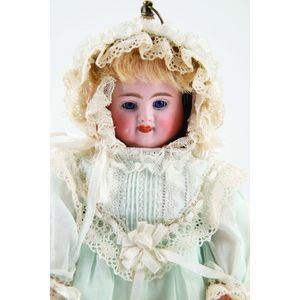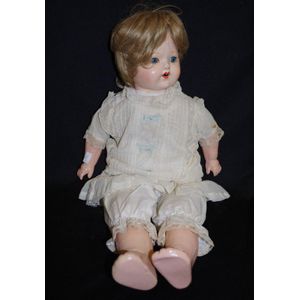
A large Royal Navy 'HMS Barham' sailor's Ventriloquist dummy, cloth and papier mache, circa 1930s, height 100 cm approx. Note: handmade dummy belonging to hallmarked sterling Barham Petty Officer (name unknown) who served on the Royal Flagship during the…

Bergner Three-Face Bisque Doll with Crier Voice Box
Carl Bergner three face character bisque doll, crying, happy and sleeping faces turned by rod on top of papier mache head hood, painted features with blue stationary eyes and blonde hair fringe on cloth covered card, composition limb body with working…

Antique Rag Body Doll with Papier Mache Head
Antique rag body doll with papier mache half legs, arms and head. Glass eyes. No makers marks. One tooth and eyebrows missing. 56 cm high. Doll's Hospital 1984 receipt.
 Loading more...
Loading more...